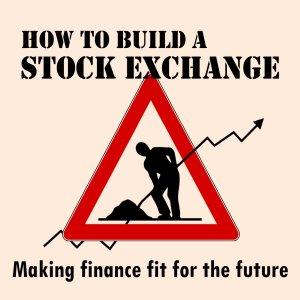How to Build a Stock Exchange

Episode 16. Markets at the speed of light
This episode explores the technological transformations that have led to markets at the speed of light: algorithmic traders and flash crashes. Yet for all the images of terrifying AI we discover that stock markets in the cloud are more rooted in material than ever before, pushing against the laws of physics in the pursuit of speed and profit. We see a culture war between hoodie and suit, techie and yuppie, but find – no surprise here – that whatever the uniform, the elites win out in the end.
Transcription
The Frankenstein story – the monster that bursts out of the laboratory and pursues its creator – is firmly embedded in our collective imagination. The novelist Robert Harris gives it a spin in the Fear Index, published in 2011. But the monster is not a thing of flesh and blood. It is an artificially intelligent trading algorithm launched by a Geneva-based hedge fund. It is fantastically, malevolently intelligent: able to penetrate secret files and to discover the worst imaginings of its creator, to conduct a reign of terror through purchase orders and sub-contracts. As its creator attempts to burn down the servers that house it, the algorithm uploads itself into the digital netherworld where it roams free, doing as its code instructs: feeding off fear for financial profit.
Harris has a keen ear for details in the news, and the financial cataclysm sparked off by this machine actually took place, just over ten years ago, in the afternoon of 6 May 2010. A wobble in the US markets, and then a spectacular collapse: the Dow Jones losing 998.5 points in 36 minutes, a trillion dollars of capital evaporating in five. Circuit-breakers – automatic cut outs designed to stop the market self-destructing – halted trading. When the market opened again, prices climbed quickly back to the morning’s levels. Although individual traders may have made or lost fortunes (we don’t know – and Harris deftly weaves fiction into the gap) very few ripples spread into the economy as a whole. This was the ‘Flash Crash’.
There may have been fear but there was no panic, no shrieking or shouting. The whole affair was conducted algorithmically, as high-speed trading machines did the electronic equivalent of yelling ‘sell, sell’, unloading stock to each other at ever-falling prices, and creating a self-fulfilling cyber-crash. Algorithms don’t panic, but they do form expectations, and they do so in thousandths of a second.
An initial investigation found that a large sell order had triggered the flash. There was a veiled reference to a problem with the timing of data feeds, a technical, structural problem. If you follow the news in the UK, though, you might have heard of the Hound of Hounslow, Navinder Singh Sarao, a solitary London trader with unusual personality traits who built an engine to ‘spoof’ the Chicago algorithms and made millions trading from his bedroom. American regulators became convinced that his activities had sparked off the crash, though this seems a lot less plausible than the fiction of malevolent artificial intelligence. Sarao may have made $70 million but most of his money seems to have ended up in the hands of fraudsters and questionable entrepreneurs. The only thing he purchased was a second-hand VW which he was too nervous to drive. He was extradited to the United States to face justice. The judge, expecting a criminal mastermind, saw instead a 41-year old man with autism who still lived with his parents and laid down a lenient sentence of a year of house arrest, even if Sarao had threatened to cut off the thumbs of a market administrator.
Hounslow, for those who don’t know London, is an unremarkable borough to the west of the city: suburbs, offices, few tourist attractions. Though the pun on Wolf of Wall Street may have been too tempting to avoid, it tells us something. In the place of the champagne and cocaine fuelled highlife of Jordan Belfort, we have a super-trader in an upstairs bedroom clad ...






 Visit Podcast Website
Visit Podcast Website RSS Podcast Feed
RSS Podcast Feed Subscribe
Subscribe
 Add to MyCast
Add to MyCast